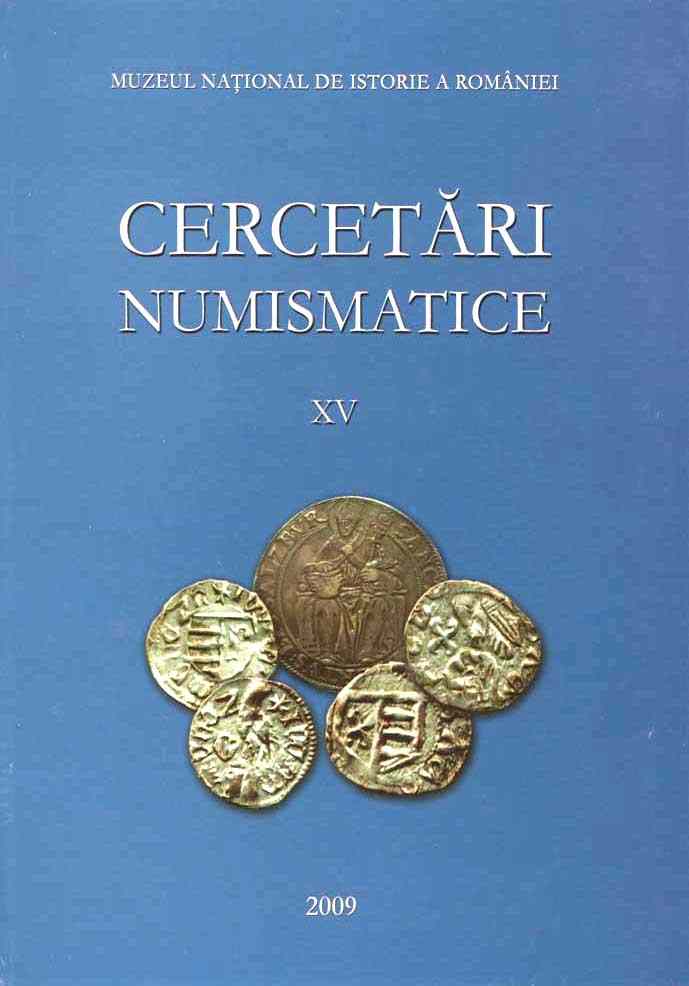
The metrology of the pre-reformed coinage of the Wallachian prince Mircea the Elder, in the light of the X ray analyses of the coins kept in the collection of the Hungarian National Museum in Budapest
| Autori |
|
| Secţiunea |
|
| Limba de redactare | engleză |
| Descriptori |
|
| Excerpt | The Hungarian National Museum in Budapest owns the most important collection of Romanian medieval coins so far kept in foreign museums. Its collection of 14th-15th century Wallachian issues alone consists of 767 specimens, but it also contains several hundred Moldavian coins. Although the collection of Romanian medieval coins was established in the early 19th century, it reached a significant size only after 1887, when the great collection of Ignácz Dobóczky (1813- 5th April 1892) was acquired. Quite likely, during the mid 1880’s Ignácz Dobóczky’s collection was the largest and most complete of this kind in the world, being larger not only than any other Western or Russian collection of Romanian issues, but surpassed even the size and the importance of the similar coin collection of the Romanian Academy. During the following century, under the direction of Lajos Réthy, Ödön Gohl, Pál Harsány, Géza Jeszenszky, Lajos Huszár, István Gedai and Melinda Torbágyi the Romanian collection was enlarged through further acquisitions and donations. Quite likely, “the Golden Age” of the Romanian collection of the Hungarian National Museum was the period before the First World War, during the time when the Coin Room was directed by Lajos Réthy. Réthy had shown a special interest in Romanian medieval coinage and had published several contributions on this topic, which are still retaining most of their scholarly value. Quite likely, Lajos Réthy, together with Dimitrie A. Sturdza was one of the founders of Romanian numismatics, as a distinct field of European medieval numismatics. The collection of the Romanian coins of Ignácz Dobóczky, as well as that of the Hungarian National Museum, were already known to Romanian scholars since the last decades of the 19th century, but so far they were not completely investigated. Since 2007, the first writer of these lines, together with Dr. Csaba Tóth, the Keeper of the medieval coins of the Hungarian National Museum, had launched a common project of cataloguing the entire collection. Later, in February 2008 the project was also joined by our colleagues Gheorghe Niculescu and Migdonia Georgescu from the National Laboratory for Researches Regarding the Restoration and the Conservation of the Movable Cultural Heritage – Bucharest and Dr. Bogdan Constantinescu from the National Institute for Researches and Development for Physics and Nuclear Engineering “Horia Hulubei” – Bucharest-Măgurele. All the investigations regarding the Romanian medieval coins kept in Budapest became part of the ARCHAEOMET and ROMARCHAEOMET programmes, generously financed by grants of the Romanian Ministry for Education and Research. Both programmes aim the investigation by atomic and nuclear methods of the composition of the ancient and medieval coinage, as well as of other archaeological artefacts, for a thorough reconstruction of the ancient metallurgical technologies, legal monetary standards and the identification of the sources and the circuits of the metals in the Romanian regions, since Prehistoric times till the dawn of the Modern age. Most of the 66 pre-reformed coins of Mircea the Elder (1386-1418, together with 3 of their imitations and 2 coins of Vlad I (1395-1396) come from several hoards: „Romania/before 1904” (quite likely, found in the Western part of Wallachia), Niculiţel-Bădila Hill/1906 (comm. of Niculiţel, Tulcea County, in Dobrudja, Romania), Szabadszallas/1915 (Pest County, Hungary), „Romania/before 1917-1918” (quite likely, found in Eastern Wallachia or Dobrudja, during the First World War), but there are also a few coins from the old collection of the Hungarian National Museum and from Ignácz Dobóczky’s collection. The pre-reformed issues of Mircea the Elder consist of silver or billon ducats, belonging to two large groups – bearing Slavonic and Latin inscriptions. On the obverse they bear the representation of a parted shield and on the reverse, the representation of a helmet, surmounted by an eagle. Each group has several variants of issues, bearing different sigla or other devices. According to the last researches, the pre-reformed coinage of Mircea the Elder was struck until the beginning of 15th century (until 1402/1405). The coins of Vlad I bear the same kind of representations, but only Slavonic inscriptions. All the pre-reformed coins of Mircea the Elder, their imitations and those of Vlad I kept in the collection of the Hungarian National Museum in Budapest underwent a series of non-destructive investigations, for the determination of the composition of the alloy in which they were struck. For the non-destructive compositional analyses the X-Ray Fluorescence (XRF) method was applied. This method led to the qualitative (which elements are represented?) and quantitative (in which proportion?) determinations of the chemical elements from an analysed sample, using the X-ray characteristic spectres, released after an excitation with gamma photons or primary X-rays (fluorescence spectrum). Following removal of an inner electron by an energetic photon provided by a primary radiation source (gamma or X-rays), an electron from an outer shell drops into its place. Each transition yields a fluorescence photon with a characteristic energy equal to the difference in energy of the initial and final orbits. An X-ray mobile spectrometer Innov-X Systems α4000s was used for the measurements. This device uses as excitation source, an X-ray tube with Tungsten anticathode, with a range of voltage from 10 – 40 kV and an intensity of 10 – 50 μA. This detector belongs to the Si PiN diode type, cooled-down by Peltier effect. The results of the measurements are processed with a dedicated software, provided together with the device. A number of 142 fluorescence spectra are recorded, one to each obverse and reverse. The values of the metallic content were given in ‰ and, according to the contemporary medieval Byzantine-Balkan and Central European finesses standards, in carats (1 carat = 41.66‰) and lots (1 lot = 62.50‰). The marking (EOT …), following the reference, represents the current number of the coin from the data base of the collection, being used as provisory inventory number instead of the very complicated system used by the Coin Room of the Hungarian National Museum. |
| Paginaţia | 135-168 |
| Descarcă fişierul | |
| Titlul volumului de apariție |


